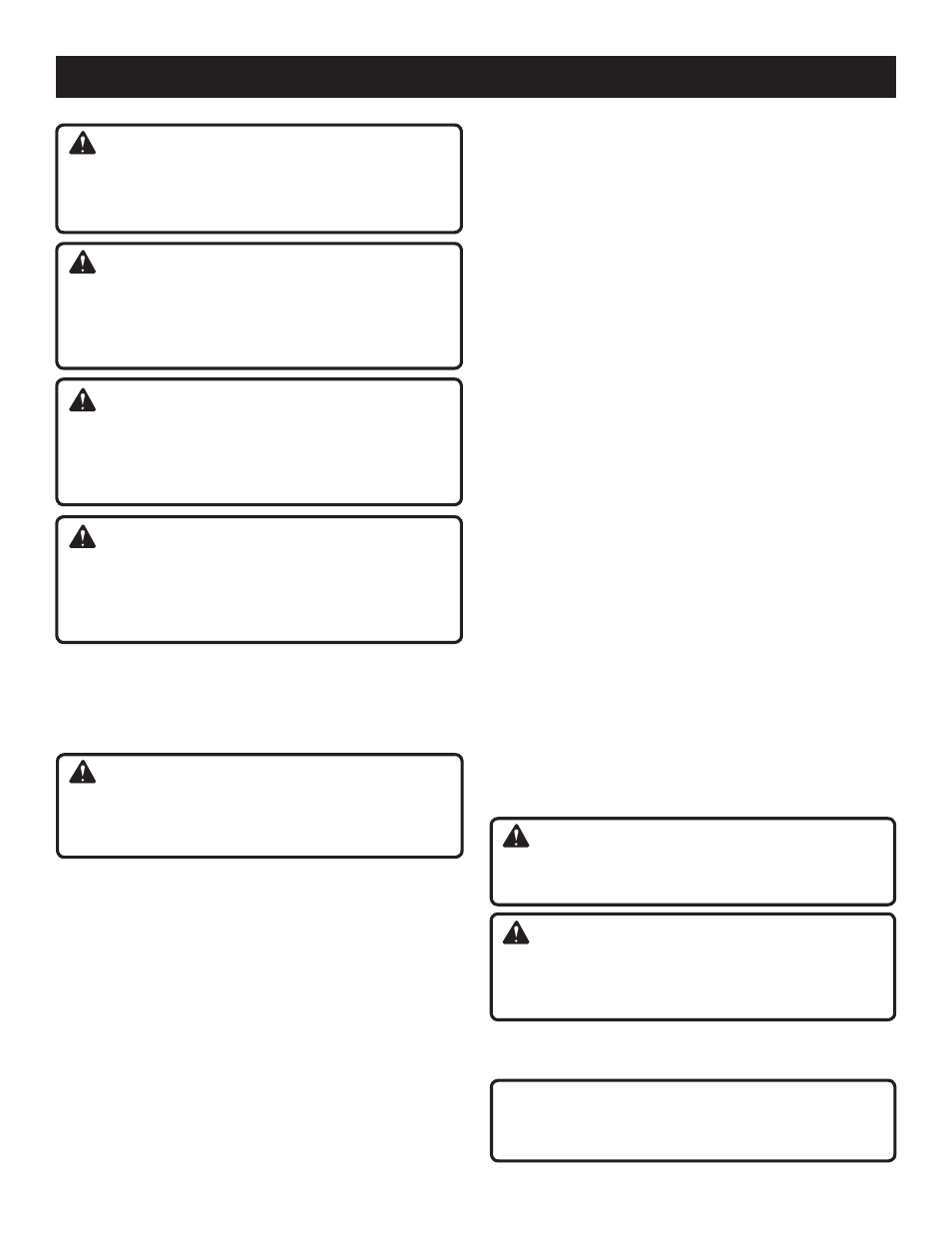Operation – Ryobi P410 User Manual
Page 5

5 — English
OPERATION
WARNINg:
Do not allow familiarity with this product to make you
careless. Remember that a careless fraction of a second
is sufficient to inflict serious injury.
WARNINg:
Always remove battery pack from the tool when you are
assembling parts, making adjustments, cleaning, or when
not in use. Removing battery pack will prevent accidental
starting that could cause serious personal injury.
WARNINg:
Always wear eye protection with side shields marked to
comply with ANSI Z87.1, along with hearing protection.
Failure to do so could result in objects being thrown into
your eyes and other possible serious injuries.
WARNINg:
Do not use any attachments or accessories not recom-
mended by the manufacturer of this product. The use of
attachments or accessories not recommended can result
in serious personal injury.
APPLICATIONS
You may use this product for the purposes listed below:
Sanding on wood surfaces
Removing rust from and sanding steel surfaces
WARNINg:
Battery products are always in operating condition.
Therefore, the switch should always be locked when not
in use or carrying at your side.
INSTALLINg/REMOvINg BATTERY PACK
See Figure 4, page 8.
To install:
Insert the battery pack.
Make sure the latches on each side of the battery pack
snap in place and that battery pack is secured in the
product before beginning operation.
To remove:
Depress the latches on each side of the battery pack.
TURNINg ThE SANDER ON ( I )/OFF ( O )
See Figure 2, page 8.
Install the battery pack.
To turn on the sander: press down the on
( I ) side of the
switch.
To turn off the sander: press down the off
( O ) side of the
switch.
SANDINg DISC SELECTION
Selecting the correct size grit and type sanding disc is an
extremely important step in achieving a high-quality sanded
finish. Aluminum oxide, silicon carbide, and other synthetic
abrasives are best for power sanding. Natural abrasives,
such as flint and garnet are too soft for economical use in
power sanding.
In general, coarse grit will remove the most material and finer
grit will produce the best finish in all sanding operations. The
condition of the surface to be sanded will determine which
grit will do the job. If the surface is rough, start with a coarse
grit and sand until the surface is uniform. Medium grit may
then be used to remove scratches left by the coarser grit and
finer grit used for finishing of the surface. Always continue
sanding with each grit until surface is uniform.
ATTAChINg hOOK-AND-LOOP SANDINg DISC
See Figure 4, page 8.
To attach hook-and-loop sanding disc:
Remove battery pack from sander.
Align the holes in the sanding disc with the holes in the
hook-and-loop backing pad.
Press the sanding disc against the backing pad as firmly
as possible.
NOTE: To provide for the best adhesion, we recommend
that you clean the backing pad and the sanding disc
backing occasionally by brushing them lightly with a small
brush.
OPERATINg ThE SANDER
See Figure 5, page 8.
Secure the workpiece to prevent it from moving during
operation.
WARNINg:
Unsecured workpieces could be thrown towards the
operator causing injury.
WARNINg:
Keep your head away from the sander and the sanding
area. Your hair could be drawn into the sander, causing
serious injury.
Place the sander on the workpiece so that all of the
sanding disc surface is in contact with the workpiece.
NOTICE:
To avoid motor damage resulting from overheating, do
not cover the air vents with your hand.